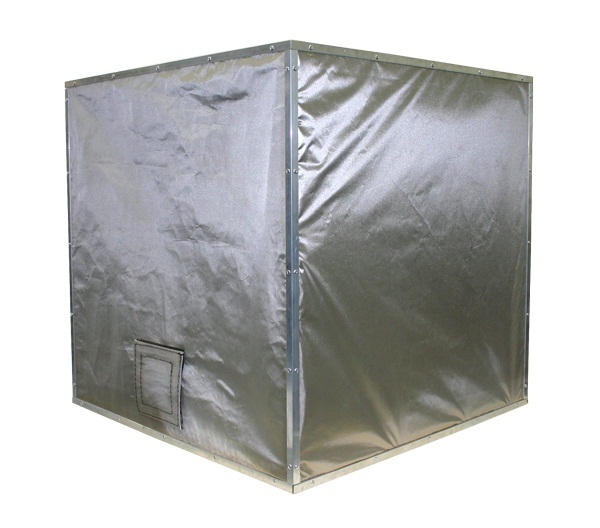Building a Faraday Enclosure for Outdoor Adventures: Suggestions and Tactics

As you think about outdoor adventures, your mind may drift to the natural world, campfires, and the simple joys of the environment. But, in our increasingly technology-driven world, the question often arises: how can you protect your electronic devices from unexpected threats? One ingenious solution that can provide reassurance is a Faraday cage. In the beginning designed to shield against electromagnetic fields, a Faraday cage can be an invaluable tool while you're out in the wild, protecting your gadgets from everything from unpredictable weather to possible electromagnetic disturbance.
In this guide, we will cover key tips and tricks for creating a Faraday cage tailored to your camping needs. From grasping the basic workings of these defensive enclosures to selecting the most suitable materials and sizes for your specific needs, we've got you covered. Whether you are thinking about a foldable setup for easy transport or a more permanent option, knowing how to ensure optimal shielding effectiveness will help you make smart decisions. Follow along as we delve into the world of Faraday cages and discover safeguard your devices while enjoying the great outdoors.
Comprehending Faraday Cages
A Faraday cage is a construct designed to deflect electromagnetic interference, providing a shield for sensitive electronic devices from various forms of electromagnetic disruptions. Named for the physicist Michael Faraday, these cages work on the basis that an outside electric field is neutralized by the arrangement of charges on the cage. The result is a protected enclosed area that can shield against a range of electromagnetic risks, including radio signals and electromagnetic pulses.
The effectiveness of a Faraday cage depends on its build and design. Typical materials used include metals like aluminum, aluminum metal, and steel metal, which are outstanding conductors of electricity. Every material has its strengths, determining how efficiently it can shield against various frequencies. Whether it's a compact or mesh structure, the selection of materials greatly impacts the cage's capabilities and the amount of protection it offers. Understanding these characteristics can be essential when choosing a Faraday cage for specific needs.
In alongside shielding capabilities, the design and size are key considerations to consider when utilizing a Faraday cage. A cage that is too compact may not fit all needed gadgets, while one that is too spacious can be ineffective in terms of room and components. Mobile solutions are offered for those who are often on the move, while stationary setups might be preferable for residential settings or emergency preparedness. Recognizing the specific use of the cage helps in making informed decisions that ensure maximum safety for your devices.
Key Features and Components
When selecting a Faraday cage, it is essential to consider its key features to ensure optimal electromagnetic shielding. Look for cages that are specifically designed to block various frequencies, including those from electromagnetic pulses. These cages should have a tight seal to prevent gaps where signals could leak in. Additionally, convenient access is crucial—be it via openings, ports, or removable panels—allowing you to store and retrieve your electronics without jeopardizing the cage's effectiveness.
Material plays a significant role in the performance of a Faraday cage. RF shielded test enclosures as copper, aluminum, and steel are among the best choices due to their high conductivity. Copper offers superior shielding capabilities but can be costlier, while aluminum is easy to carry and cost-effective. Steel, being sturdy, provides a compromise between strength and performance. Consider the specific requirements of your camping trip to choose the right metal that fits your needs without adding excessive weight to your gear.
Lastly, the design and construction of the Faraday cage matter just as much as the materials used. A sturdy cage might offer more robust protection, while mesh cages may be lighter and portable. Each type has its advantages and disadvantages depending on your intended use. If you are often on the go, look for a foldable design that allows you to carry it with ease. Ultimately, understanding the mix of features and materials will help you choose the best Faraday cage for your camping adventures and the electronics you wish to protect.
Practical Considerations for Use

When you are utilizing a Faraday cage for camping trips, you should to take into account its portability. A compact and compact design ensures it simpler to transport with your gear, allowing you to you can install it quickly regardless of your location. Choose a model that can be readily dismantled or taken apart. If you are going camping in distant areas, having a cage that is not only easily transportable but also sturdy against the elements will greatly enhance your experience.
Another important factor is the placement of your gadgets within the cage. Be navigate to these guys that devices are adequately cushioned to protect them from damage during transport. Utilizing static-free bags in conjunction with your Faraday cage can provide additional protection against static electricity. Consider the number of devices you put inside, as too many devices may impair the performance of the shielding due to limited spacing.
To conclude, ensuring the functionality and upkeep of your Faraday cage is vital for making sure it provides maximum protection. Regular checks for any evidence of wear-and-tear will assist keep your gear in good condition. Before you relying on it for significant trips, conduct tests to verify its ability in shielding against signals to make sure that your devices are safe from surrounding electromagnetic disruption. By keeping in mind these essential factors, you’ll be ready for your next camping expedition.
